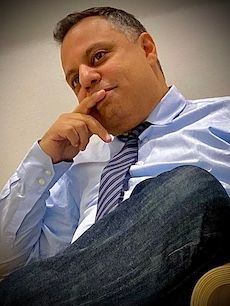Talk About Talk
Audio platforms provide new opportunities for pharma.
One of our oldest media forms is becoming the new, hot mode of communication these days. From podcasts to Clubhouse, audio is propelling industry conversations everywhere.
But the new social media platform Clubhouse is not the story. Nor is it that new podcast launches were up 278% last year. It’s not even that tech can make the simple radio medium into smart, efficient, personal media. The story here is the innovation of talking. We use our voices from the day we’re born and want to be heard. Our need to talk, be heard, and listen is engrained in us. Great ideas and good tech are now giving those needs a new platform.
Podcasts

There seem to be podcasts for everything. The New England Journal of Medicine (NEJM) offers a weekly audio summary for its readers who want to drive while they consume. Pharm Exec has a podcast for the people who want to reach the person who’s listening to the NEJM weekly summary. If you poke around Apple Podcasts—where 58% of audiophiles found their audio files last year—you’ll find people talking about the people talking about the people talking about medicine.
Podcasts are great. A friend of mine left healthcare media for mainstream podcasts five years ago because she says podcasts are the most engaging media she’s ever worked with. Maybe that’s why podcast revenue rose 46% last year and the Internet Advertising Bureau (IAB) expects it to reach $1 billion this year.
Clubhouse
More than 10 million people are now on the drop-in audio chat app Clubhouse—that’s up from about 1,500 just last May. If you haven’t heard of Clubhouse, it’s a place where your trendiest friends invite each other to talk. They then tend to talk about that talk on other social media for the hoi polloi. Getting an invite to Clubhouse is exclusive. The chosen members live-chat in a “room” and encourage others to tune in as they speak. Think of it as an audio version of Twitch. If you haven’t heard of that, well…
Medical media can tap into Clubhouse by using it as a more clubby fireside chat. Get two doctors in a Clubhouse “room” and let them talk. If they are as spirited as Dr. Nathan A. Pennell, associate professor and director of the Lung Cancer Medical Oncology Program at Cleveland Clinic’s Taussig Cancer Institute, and Dr. H. Jack West, an oncologist and clinical associate professor at City of Hope National Medical Center, were on Twitter toward the end of last year, that’s a can’t-miss conversation. Over a few days, the two KOLs debated the relative import and merits of Tagrisso’s ADAURA trial. Who wouldn’t be there to hear something like that happening in real time?
Every doctor, medical society, and most brands care about big meetings. Using Clubhouse to stream sessions directly could have even greater impact.
There are even financial opportunities to be had. Clubhouse recently announced a tipping service, where listeners can tip the streaming organization for providing the info, like we tip Uber drivers. It’s a whole new revenue stream.
What’s next?
Of course, these platforms do have their limitations. Clubhouse, for instance, is live, which is great, until you can’t be there. Look at the biggest social platforms—Facebook, Instagram, Twitter, LinkedIn, TikTok—none of them requires you to be present when the other person posts. We can see pictures, watch videos, and read text on our time.
Podcasts are long form, which can challenge attention spans. But if tiny audio posts lived on a social platform that looked like Spotify, it could revolutionize CME. A series of educational audio clips could play continuously.
Not enough? How about a doctor leaving a session at the American Society of Clinical Oncology’s annual meeting and talking into his phone about what a great presentation he just heard—not delivering boring old text but sharing his voice with emotion? He could even add a simple picture, such as a slide from a clinical trial, and narrate. When you think about these possibilities, you begin to realize it could be the setting for asynchronous dinner meetings.
The story here isn’t just about talking. It’s about innovating talk, which, sadly, you had to read. Wouldn’t you have loved to have heard it instead? After all, we all want to talk, listen, and be heard.
Charles Benaiah, chief executive officer, Watzan
The Misinformation Maze: Navigating Public Health in the Digital Age
March 11th 2025Jennifer Butler, chief commercial officer of Pleio, discusses misinformation's threat to public health, where patients are turning for trustworthy health information, the industry's pivot to peer-to-patient strategies to educate patients, and more.
Navigating Distrust: Pharma in the Age of Social Media
February 18th 2025Ian Baer, Founder and CEO of Sooth, discusses how the growing distrust in social media will impact industry marketing strategies and the relationships between pharmaceutical companies and the patients they aim to serve. He also explains dark social, how to combat misinformation, closing the trust gap, and more.